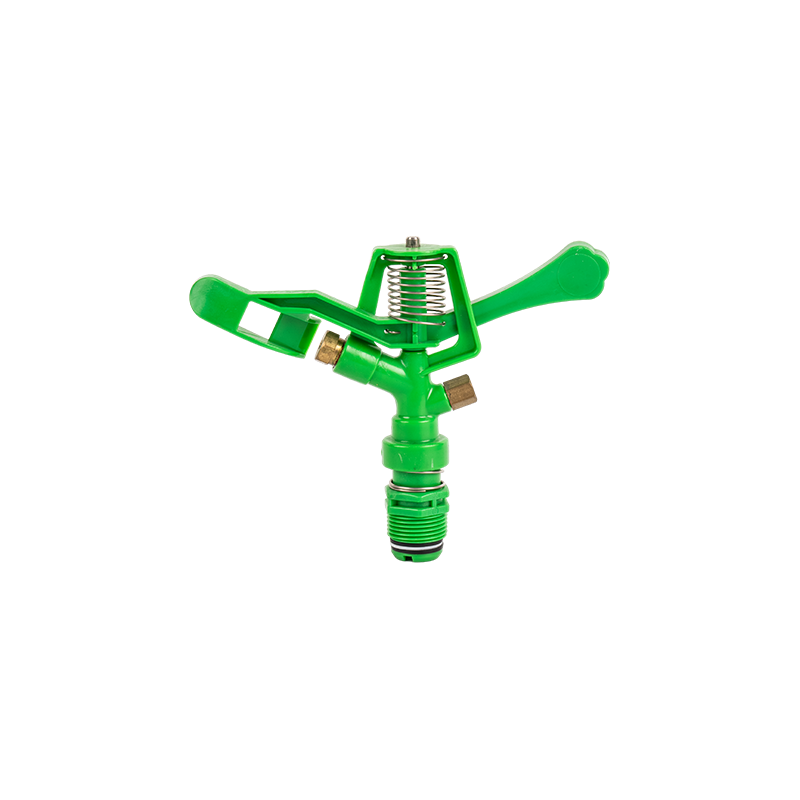 By Admin
By Admin Adjusting the spray mode and range of a garden irrigation sprinkler typically involves the following steps:
Identify Spray Pattern Adjustment: Determine if your sprinkler model allows for the adjustment of the spray pattern. This feature is commonly found in rotating or oscillating sprinklers, where users can modify the arc or rotation pattern of the sprinkler to suit the specific dimensions and shape of their lawn or garden beds. For sprinklers equipped with fixed spray patterns, such as stationary spray nozzles or misters, assess whether replacing these nozzles with options offering different spray angles or patterns is necessary to achieve optimal coverage across varying landscape contours.
Adjust Spray Pattern (if applicable): Rotating Sprinklers: To adjust the spray pattern on rotating sprinklers, locate the adjustment lever or dial typically positioned on the sprinkler head. By manipulating this control, users can alter the angle or width of the arc swept by the sprinkler, effectively customizing the coverage area. Fixed Sprinklers: If your sprinkler utilizes fixed spray nozzles, explore the possibility of replacing these nozzles with alternatives featuring diverse spray angles or patterns. This approach ensures better alignment with the specific layout and dimensions of your garden or lawn, enhancing overall water distribution efficiency.
Adjust Range: Distance Adjustment: Modify the distance or range of water dispersal by engaging with the designated adjustment mechanism—usually a knob or collar—positioned on the sprinkler head. Rotating or sliding this control enables users to regulate the throw distance of the water spray, accommodating varying distances within the landscape. Pressure Adjustment: Acknowledge the significant influence of water pressure on sprinkler performance. Higher water pressure generally extends the range of the sprinkler, while lower pressure tends to reduce it. Adjustments pertaining to range should therefore consider prevailing water pressure levels to optimize coverage and minimize water wastage.
Test and Fine-Tune: Once adjustments have been made, activate your sprinkler system to initiate a comprehensive evaluation of the newly configured settings. Observe the trajectory and dispersion of water discharged by the sprinkler, meticulously assessing its ability to deliver uniform coverage across the designated landscape areas. Conduct thorough monitoring to ascertain the efficacy of the adjustments, ensuring that all targeted zones receive adequate irrigation without encountering issues such as oversaturation or insufficient water distribution.
Repeat if Necessary: Implement iterative refinement of adjustments as deemed necessary to achieve optimal water distribution efficiency and coverage uniformity. This iterative process is particularly crucial when adapting the sprinkler system to accommodate specific topographical features or fluctuations in water pressure levels. Embrace a systematic approach to fine-tuning adjustments, fostering an environment conducive to sustainable water management practices while preserving the health and vitality of your garden or lawn.
Consider Water Pressure: Factor in the dynamic nature of water pressure fluctuations, which can exert a profound impact on the operational performance of your sprinkler system. Maintain vigilant awareness of prevailing water pressure levels, adjusting settings accordingly to uphold consistent and reliable sprinkler operation. Remain proactive in recalibrating adjustments if confronted with substantial deviations in water pressure, thereby safeguarding the consistent delivery of irrigation across diverse landscape configurations.
YR9501A G3/4" plastic garden irrigation impact sprinkler
